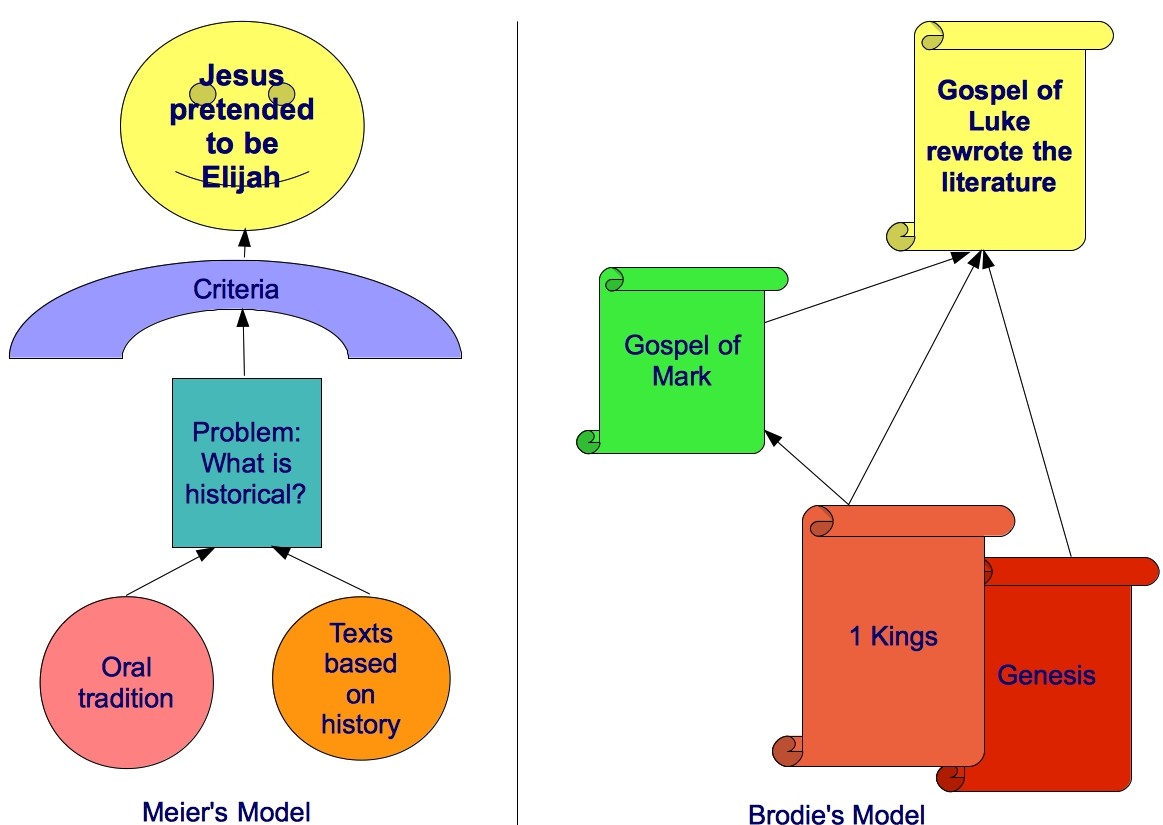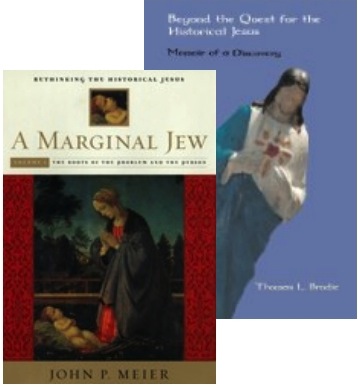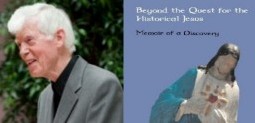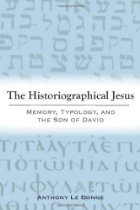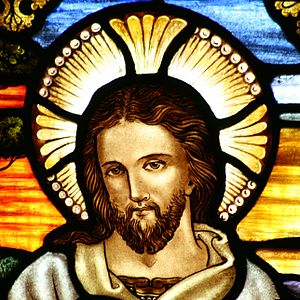.
| Continuing the series on Thomas Brodie’s Beyond the Quest for the Historical Jesus: Memoir of a Discovery, archived here. |
.
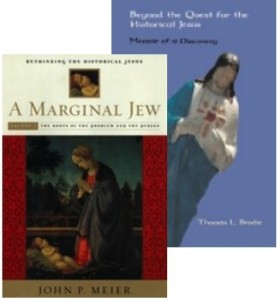 Brodie is analysing John Meier’s work, A Marginal Jew, as representative of the best that has been produced by notable scholars on the historical Jesus.
Brodie is analysing John Meier’s work, A Marginal Jew, as representative of the best that has been produced by notable scholars on the historical Jesus.
Having begun by identifying the two key problems of Meier’s work as (1) reliance upon the oral tradition model and (2) misreading the sources as windows to historical events as a result of failing to appreciate the true nature of those sources by means of literary analysis, Brodie next showed how these two problems misled scholars into the daunting task of attempting to sift the genuinely historical elements from the Gospel narratives.
That task of divining the historical from the non-historical has led to the development of criteria. But Brodie argues that all of those criteria are flawed in some way (a point few of Brodie’s peers would disagree with; that is why they believe they are on stronger ground if they use several of them, never just one, and use them “judiciously”) but that several of them in particular are best and most simply and directed answered by a deeper and wider understanding of how ancient literary artists worked. Contradictions and discontinuities are a pervasive feature of the literary makeup of the Biblical texts and function in consciously planned ways.
To add another illustrating example from the one I gave from Brodie himself in my previous post, this one not from Brodie but from my own reading of scholarly works comparing Herodotus’ Histories with the Primary History of Israel (Genesis to 2 Kings), a number of scholars have argued that the contradictory accounts of such events as David’s rise to power are set side-by-side just as Herodotus likewise pairs contradictory accounts of certain events in Greek history. The notable difference with the biblical literature is that in the work of Herodotus the author has intruded into the narrative the voice of a narrator to comment on these differences. The Gospels are following the style of the OT “histories” of removing, for most part, the directly intrusive narrator’s voice.
The criterion of multiple attestation also fails since, according to Brodie, the various sources are not at all independent but are re-writings of one another. Re-writing and transforming texts was a singular feature of the literary compositional techniques of the day.
Disastrous consequences
So when some scholars see the clear allusions in the Gospels of Mark and Luke to the stories of Elijah, failing to understand how ancient authors more generally imitated and emulated other writings, they conclude that Jesus himself was deliberately (historically) modeling himself upon Elijah! John Meier, for one, concludes that Jesus historically saw himself as standing in the line of Elijah and Elisha (Marginal Jew, III, 48-54). But as Brodie points out,
To claim that Jesus modeled his life on Elijah or Elisha may be a very welcome idea, but it goes beyond the evidence. It is not reliable history. (p. 158, my bolding)
Jesus’ call of his disciples as a case study
Continue reading “Making of a Mythicist — ch 17 . . . Did Jesus Model Himself on Elijah?”

